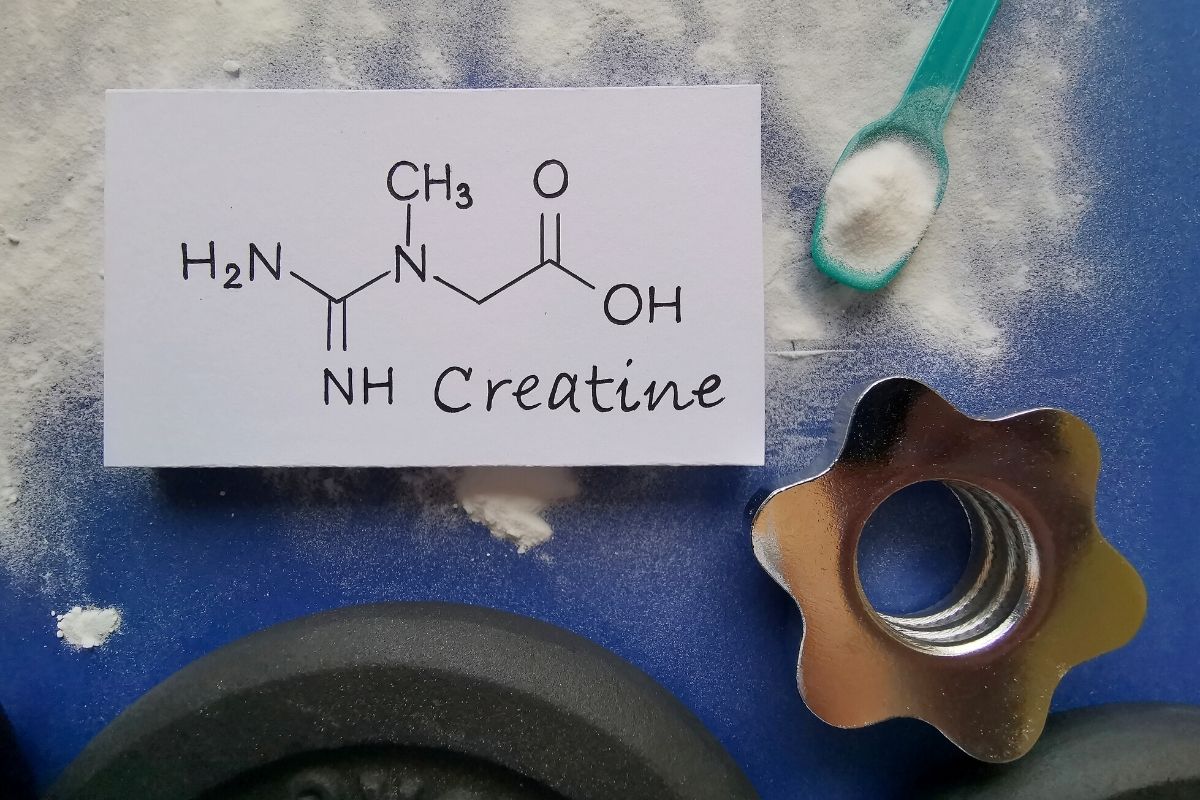Creatine effects on endurance sports

It is undeniable that taking a creatine supplement gives a strong positive imprint on the quality of training, with an average of 5-15% improvements in terms of high-intensity performance and repetitive efforts (Kreider, 2003).
However, it is important not to focus only on its use as a "strength supplement", because the many studies on creatine have shown that this substance also acts as an antioxidant, reducing cell damage caused by oxygen radicals, as well as having an anti-inflammatory and nootropic effect.
Creatine monohydrate and endurance sports
The evidence and experiences "from the field", then, would require further direct investigations in the field of endurance sports. Because of its benefits, I would like to suggest it in programs related to sports such as triathlon, cycling, skiing (not just downhill or slalom).
Just think that creatine:
- helps stabilize cellular pH;
- plays an important role in balancing the different aerobic and anaerobic energy sources;
- it is certainly one of the ideal supplements in the phases of intensification or strengthening of various disciplines and activities that involve very rapid and prolonged changes in the intensity of work;
- it is the energy of "prompt intervention" indicated not only for the bodybuilder or the powerlifter but also for footballers, rugby players, fighters, and triathletes.
How does creatine affect the body?

Over 95% of the creatine produced is stored in skeletal muscle while the remaining 5% is distributed between the heart, brain, kidney, liver, and testes. About two-thirds of the creatine present in the muscle is in the form of phosphocreatine thanks to the action of creatine kinase, an enzyme that catalyzes the transfer of a phosphate group from ATP to creatine.
The reaction is reversible and in the event of increased energy requirements, creatine kinase allows the phosphate group to be transferred from creatine to ADP, rapidly regenerating the ATP used to obtain the energy necessary for muscle contraction. The availability of creatine, therefore, becomes crucial tin sustaining a short-term intense muscular effort, but not only! It allows reducing the consumption of glycogen in the muscle by reducing the accumulation of lactic acid.
In this way, less energy will be sought from glycolysis, less lactate and less hydrogen ions will be lost. The muscle will therefore be less fatigued and resistant to exhaustion for longer times (Oliver, 2013).
Creatine and muscle gain
Speaking of liquids ... fighters, sprinters of various distances, ironmen, skiers, but also footballers and rugby players, don't forget creatine supplements in the intensification and strengthening phases! In addition to seeing the loads go up, and to tolerate more volumes of work, among the effects so welcome to bodybuilders or those who have to increase their muscles, there is an increase in body mass. This is due to intracellular water retention (creatine resides almost completely in the muscles) caused by the osmotic effect produced by the increase in concentration between creatine and phosphocreatine.
Cell membranes are surrounded and protected by phospholipid heads which have downward tails that oscillate and cause nutrients to arrive inside (endocytosis) or exit (exocytosis). The relationship between the inside of the cell and the outside is called osmosis. When creatine enters the muscle cell it favors the entry of nutrients (amino acids, carbohydrates, and water).
Creatine does NOT promote water retention or fat accumulation!
The weight gain that could occur during its intake is related to intracellular retention, which is entirely positive. As a consequence we will have:
- a highly "anabolic" cell,
- faster recovery,
- a reduction in muscle damage and related inflammation.
"Anabolic" because, by increasing cellular nutrients and hydration, we will have a cell with better protein synthesis, bearing in mind that the cell swelling volumizes and thickens against its walls giving a further "mechanical" signal to the stimulus on hypertrophy.
The best quality creatine monohydrate: Creapure®

This version of creatine comes in a "micronized" form, it is completely free of impurities and unnecessary by-products. The benefits of creatine in the micronized version are due to the fact that the so small size of the particles results:
- very easy to mix in water (and/ or with other elements),
- can be absorbed much more easily,
- allows greater bioavailability for the muscles
- it does not present common side effects of versions of the past which, due to solubility problems, did not allow ad hoc absorption, thus favoring intestinal problems.
Why did creatine once give intestinal problems?
It was, therefore, necessary to take a much greater dose than necessary to absorb enough, while still assimilating only a small part! Now that it has been seen that the loading phase may not be necessary, the integration of micronized creatine has become completely complete, effective, and safe.
The new frontiers of creatine research
In recent years, many different forms of creatine have been introduced such as:
- Creatine Ethyl Ester (EEC),
- Tri Creatine Malate.
It should always be noted that most of the studies testing the effectiveness of creatine have all been done on creatine monohydrate and some specifically on Creapure®. So while some of these forms of creatine may also be effective (or potentially so), it is a fact that most of the concrete confirmations are related to creatine.
This micronized shape makes it perfectly usable both in post-workout and in pre-workout, without the risk of poor absorption and compromising performance due to the subtraction of liquids.
References
- Creatine Use in Sports. Butts J, Jacobs B, Silvis M.Sports Health. 2018 Jan/Feb;10(1):31-34. doi: 10.1177/1941738117737248. Epub 2017 Oct 23. Ralf Jager, Roger C Harris, Martin Purpura and Marc Francaux (2007) 'Comparison of new forms of creatine in raising plasma creatine levels' Journal Of The International Society Of Sports Nutrition, Volume 4, Number 1 (2007), 17, 1550-278
- International Society of Sports Nutrition position stand: safety and efficacy of creatine supplementation in exercise, sport, and medicine. Kreider RB, Kalman DS, Antonio J, Ziegenfuss TN, Wildman R, Collins R, Candow DG, Kleiner SM, Almada AL, Lopez HL.J Int Soc Sports Nutr. 2017 Jun 13;14:18. doi: 10.1186/s12970-017-0173-z. eCollection 2017.
- Tom. H. Dieck (2004)'Creatine; History, Manufacturing and Applications' Japan Science And Technology Agency, Volume 21, number 6; Page 45-54
- M.C. Walter, H. Lochmuller, P. Reilich, T. Klopstock, R. Huber, M. Hartard, M. Hennig, D. Pongratz, and W. Muller-Felber (2000) 'Creatine monohydrate in muscular dystrophies: A double-blind, placebo-controlled clinical study' Neurology May 9, 2000 vol. 54 no. 9 1848-1850
- The effects of creatine supplementation on thermoregulation and physical (cognitive) performance: a review and future prospects.Twycross-Lewis R, Kilduff LP, Wang G, Pitsiladis YP.Amino Acids. 2016 Aug;48(8):1843-55. doi: 10.1007/s00726-016-2237-9. Epub 2016 Apr 16.
- Creatine and creatine forms intended for sports nutrition. Andres S, Ziegenhagen R, Trefflich I, Pevny S, Schultrich K, Braun H, Schänzer W, Hirsch-Ernst KI, Schäfer B, Lampen A.Mol Nutr Food Res. 2017 Jun;61(6). doi: 10.1002/mnfr.201600772. Epub 2017 Mar 30.
- Beyond muscles: The untapped potential of creatine. Riesberg LA, Weed SA, McDonald TL, Eckerson JM, Drescher KM.Int Immunopharmacol. 2016 Aug;37:31-42. doi: 10.1016/j.intimp.2015.12.034. Epub 2016 Jan 8.
